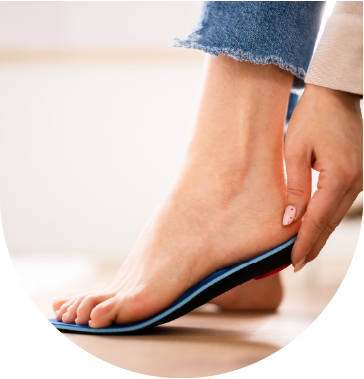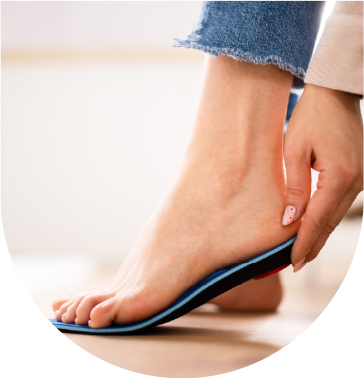Dynamic vs Static Assessment for Orthotics Recommendation

Patient
ABOUT THE practitioner
Dr. Christopher Proulx
Director of Education at Baliston Health
Massachusetts, USA
D.C., Ph.D.(abd), C.S.C.S
Private practice and consultant as a physical medicine and rehabilitation specialist and performance coordinator for individuals and athletic teams.
Holds a Doctor of Chiropractic, PhD(abd) in Exercise Science, Master’s of Science in Exercise Science, and a Bachelor’s of Science in Sport Management and Health Fitness.
Over 25 years of experience in sport and clinical sciences.
Authored and co-authored several peer reviewed publications and has presented his work across the U.S., Central and South America, China, and Europe in many different venues.
Consultant to several manufacturers, clinicians, athletes, and coaches at all levels.
Licensed chiropractor, certified strength and conditioning specialist and former certified athletic trainer (15 years).
Subject & Background
This content targets general practitioners in conservative medicine, as well as sports medicine professionals, physical therapists (PT), athletic trainers (ATC), and chiropractors (DC). The focus is to demonstrate how dynamic assessments improve orthotic prescription outcomes compared to static-only methods.
Overview
Orthotics play a pivotal role in alleviating discomfort and enhancing biomechanical function. This case highlights the contrast between static and dynamic assessment methods and emphasizes the advantages of using real-time gait analysis to guide orthotic recommendations.
Understanding Orthotics
Definitions of foot orthotics vary, but the consensus is that their primary role is to improve foot function, reduce impact forces, and prevent or manage deformities. Orthotics help support the foot both statically and dynamically—yet traditional prescription methods often fall short by focusing too heavily on static evaluation.
Static Orthotic Assessment
Static assessments involve stationary evaluations using methods like casting, scanning, or visual inspection. While cost-effective and simple, they do not account for functional movement patterns. Tools like the Foot Posture Index (FPI-6) provide partial insights but have limitations in reliability and application.
Jarvis et al. (2012) concluded that many common static evaluations used to infer dynamic function are unreliable. These limitations can lead to poor orthotic fit, discomfort, and reduced compliance.
Dynamic Orthotic Assessment
With advancements in wearable tech, dynamic assessments have become more accessible. Using gait analysis with Inertial Measurement Units (IMUs), practitioners can now analyze real-time movement to identify abnormalities during natural walking. These insights offer highly personalized and targeted orthotic prescriptions.
The trajectory of the foot in stance phase begins to show some abnormal patterning with standard deviation outside of the normal trajectory. In addition, the right foot is not following a normal trajectory, despite mostly falling within the normal range; the foot is in fact going in the opposite direction on heel off to toe off.

The foot progression angle, circumduction, sagittal plane angulation on heel strike and propulsion as well as clearance.
Shoe with Orthotics: The orthotics recommendation from the shoe only was based on several factors from the analysis, revealed the use of the Walk Performance only, no wedges.



The foot stance trajectory shift considerably to the lateral for both feet with the left having excessive inversion/supination in later foot flat, however returns to normal in toe off. The right foot continues that opposite trajectory on toe off into inversion/supination. In Foot progression, the left foot increases slightly outward while the left is slightly inward, however minimally.

Shoe with Orthotics and postings: The orthotics recommendation from the shoe with orthotics was based on several factors from the analysis, revealed the following wedges:


Gait Line and Propulsion Rate remained similar to pretesting. There was more correcting with the stance trajectory of both feet especially with regards to toe off on the left foot.

Foot progression remains slightly more outward on the left, but otherwise unremarkable, as with clearance and sagittal angles.
Interpretation of findings
The purpose of this exercise was to introduce the dynamic evaluation of walking for the recommendation of StrideAI orthotics. Normally, adding the DigitsolePro sensor insole on top of another insole, the outcomes of the trajectory during stance phase (Pronation/Supination) will likely be shifted laterally, as in this case. Therefore these trajectory lines are somewhat closer to midline and not as supinated as appearing.
The findings do support the recommendation and correction of the orthotic, in addition to evaluating the sensitivity of the system to detect even small orientation of postings to correct otherwise considered abnormal


